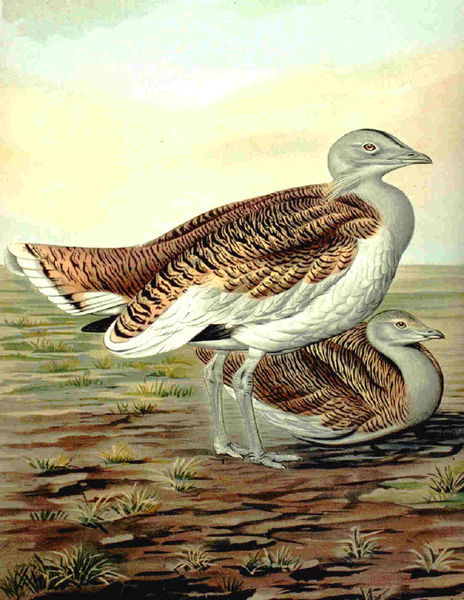February 13
Posted by sydney on Feb 13th, 2008

Great Bustard
- 1792: February 13, 1792 – Sowed the ashes of my own making in the great mead, where the grass is finest. Finished tacking the fruit wall-trees. Gossamer streams from the boughs of trees. Brimstone butterfly, Papilio rhamni.
- 1791: February 13, 1791 – As there has been little frost, the antirrhinum cymb: flourishes, & blossoms thro’ the winter.
- 1789: February 13, 1789 – Lined the hot-bed screen with reeds. Cucumbers come-up well: bed works well.
- 1784: February 13, 1784 – This evening the frost has lasted 28 days.
- 1782: February 13, 1782 – Things froze in the pantry. Shallow snow: ground very hard.
- 1781: February 13, 1781 – Stormy all night. Much thatch blown-off, & some trees thrown down.
- 1780: February 13, 1780 – Turnips are all rotten.
- 1774: February 13, 1774 – Hedge-sparrow sings. Great flock of buntings in the fields towards Faringdon.
- 1772: February 13, 1772 – Wood-pecker laughs. Spring-like weather. Skylark mounts & sings. Crocus begins to blow.
- 1770: February 13, 1770 – Saw bustards on Salisbury plain: they resemble fallow-deer at a distance. Partridges pair. Wild-geese in the winter do damage to the green wheat on Salisbury plain.
The Great Bustard became extinct in Britain in the 1840s; hardly surprising given the inevitable fate of unusual and notable birds mentioned in these journals (shot, shot, shot, and shot. Changing farming practices also bear some responsibilty). They are currently being reintroduced with some success by the Great Bustard Group.
 Theme Ported to
Theme Ported to